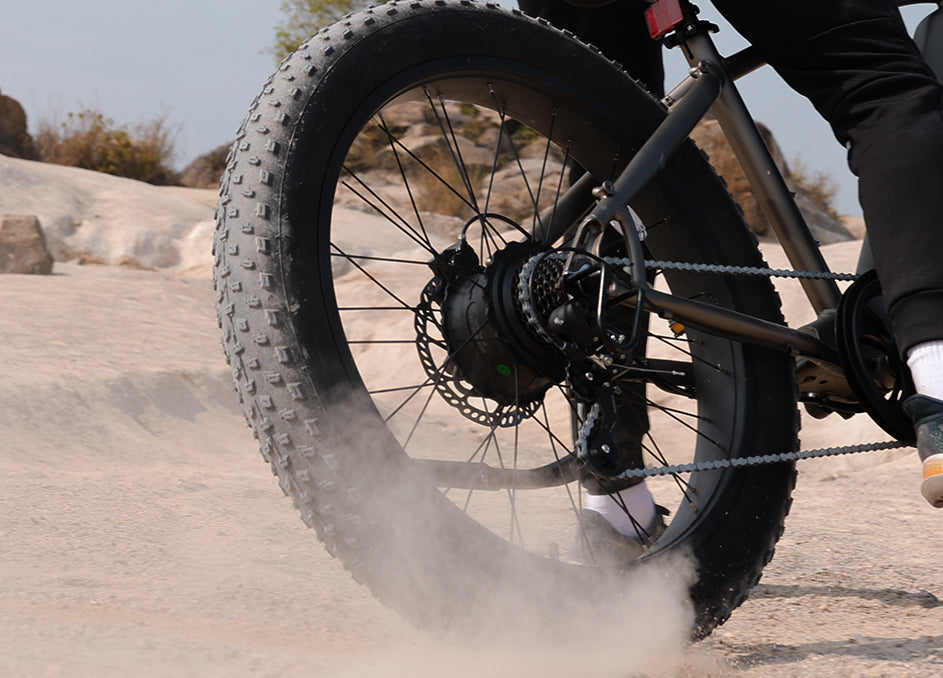Unlock the Secret to Effortless Adventures with the Ultimate Fat Tire E-Bike Hitch Rack!
As the popularity of fat tire e-bikes continues to soar, so does the need for efficient and reliable ways to transport them. These robust bicycles are designed for off-road adventures, boasting wider tires for enhanced traction and stability. However, their unique size and weight present challenges when it comes to transportation. Enter the fat tire e-bike hitch rack—a crucial accessory that ensures your ride is safely and conveniently stored during travels. Whether you’re heading to a scenic trail or a weekend getaway, having the right hitch rack can make all the difference. In this article, we’ll delve into the essential features, various types, and installation tips to help you find the perfect fat tire e-bike hitch rack for your adventures.

Understanding Fat Tire E-Bikes and Their Unique Requirements
Fat tire e-bikes are distinguished by their oversized tires, which typically measure 4 inches or more in width. This design allows them to traverse a wide range of terrains, from snowy trails to sandy beaches. However, this increased size also means that they can be heavier than standard bicycles, often tipping the scales at around 60 pounds or more, especially when the battery is included. Standard hitch racks, designed for regular bikes, often lack the necessary weight capacity and support features to safely carry these bulky e-bikes. Therefore, it’s crucial to choose a hitch rack specifically designed for fat tire e-bikes. These specialized racks offer wider cradles and adjustable features to accommodate the unique frame styles and sizes of fat tire e-bikes, ensuring a secure fit and safe transport.
Key Features to Look for in a Fat Tire E-Bike Hitch Rack
When selecting a hitch rack for your fat tire e-bike, there are several essential features to consider. First and foremost is the weight capacity—ensure that the rack can handle the combined weight of your bike and any additional gear you plan to carry. Adjustable arms are another critical feature, allowing you to customize the fit for different bike sizes and styles. Look for racks with compatibility for various frame geometries, as fat tire e-bikes can come in different shapes. Ease of loading and unloading is also vital; a user-friendly design can save you time and effort. Lastly, consider features like integrated locks for security and a tilt-away design that offers access to your vehicle’s trunk without removing the rack. A friend of mine once struggled with a hitch rack that didn’t accommodate his fat tire e-bike, leading to a frustrating trip. Choosing a rack with these features can help avoid such inconveniences.
Comparing Different Types of Fat Tire E-Bike Hitch Racks
There are several types of hitch racks available for fat tire e-bikes, each with its advantages and disadvantages. Platform racks are popular due to their stability and ease of use. They support the bike from the base, making it easier to load and unload, and they often come with adjustable wheel trays to fit wider tires. However, they can be bulkier and more expensive than other options. Hanging racks, on the other hand, utilize a frame support system, which may be lighter and more compact but can pose a risk of swaying during transport. Foldable designs are another option, allowing for easy storage when not in use but may compromise on stability. Understanding the pros and cons of each type can help you decide which hitch rack will best suit your needs and lifestyle. A colleague of mine opted for a platform rack after much deliberation and has since enjoyed the convenience it brings during his biking excursions.
Installation and Usage Tips for Fat Tire E-Bike Hitch Racks
Installing a fat tire e-bike hitch rack doesn’t have to be complicated, but it’s vital to follow the instructions carefully to ensure safety. Start by securing the hitch rack to your vehicle’s hitch receiver and tightening the bolts according to the manufacturer’s guidelines. Make sure to check that the rack is level and stable before loading your bike. When loading your fat tire e-bike, position it correctly within the cradles or wheel trays, ensuring that the tires are securely held in place. Always double-check that all straps and locks are fastened before hitting the road. To prevent any potential damage, avoid overloading the rack and regularly inspect it for wear and tear. A friend of mine once neglected to secure his bike properly and ended up with a minor accident on the highway. Taking these precautions can help ensure a safe and smooth journey for both you and your e-bike.
Making an Informed Choice for Your Transport Needs
Choosing the right fat tire e-bike hitch rack is crucial for the safety and convenience of transporting your bike. By understanding the unique requirements of fat tire e-bikes, exploring key features to look for, and comparing different types of racks, you can make an informed decision that suits your biking adventures. Remember to follow proper installation and usage tips to prevent accidents and ensure a smooth ride. Your next adventure awaits, and with the right hitch rack, you’ll be well-equipped to explore new trails and enjoy the open road with ease.








